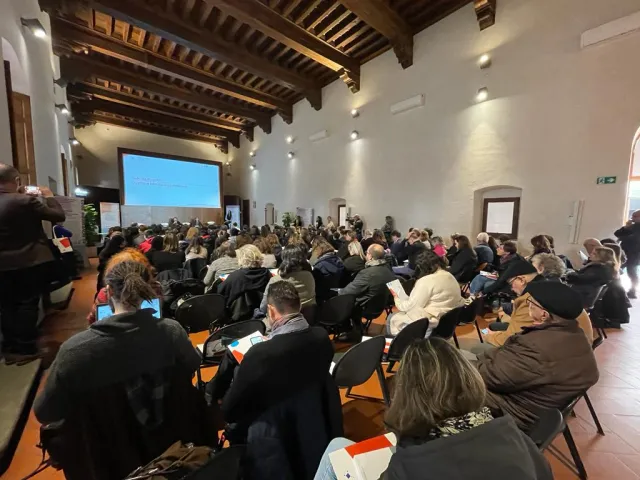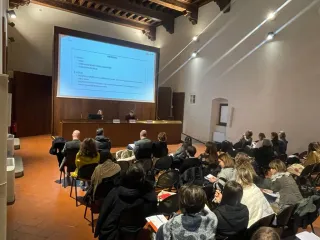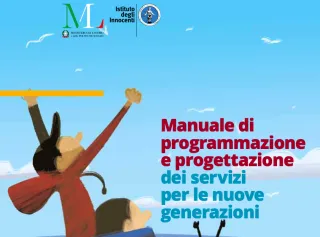Third Survey on the Lifestyles of Girls and Boys in Tuscany
A Cria (Regional Childhood and Adolescence Centre) work focusing on schools, relationships, leisure, wellbeing and the future
20 November 2023
Area di attività

The survey contains many highlights: 76% of girls “really like” the school they attend; 75% of young people play sports; the degree of satisfaction with their relationship with their parents is 8, on a scale whose maximum is 10. And there are some shadows: few young people read, and few read more than one book a year; 89% of girls spend more than three hours a day on their mobile phones; about half are directly affected by bullying, and about 25% by online bullying and, for one girl in two bullying is about physical appearance. This is what emerges from the third research on the lifestyles of girls and boys in Tuscany promoted by the Region of Tuscany in collaboration with the Regional School Office for Tuscany and the Documentation Centre for Childhood and Adolescence at the Istituto degli Innocenti in Florence. The findings were presented today during a conference held at the Institute's headquarters, in the presence of a large number of representatives of the students who participated in the research.
The survey on the lifestyles of girls and boys in Tuscany has reached its third edition. This year it has involved about 15,000 students attending first and second grade secondary schools (between 11 and 17 years of age). A total of 183 schools and approximately 800 classes took part in the survey. They were contacted and supported by the research team of the Regional Centre for Childhood and Adolescence (Cria) throughout the data collection process. The research offers practitioners a valuable tool to analyse and further understand the condition of pre-adolescents and adolescents. It also promotes a dynamic and usable interpretation of the processes concerning their condition that is particularly useful for the regional planning of integrated social and socio-medical services and interventions.
School
Secondary school girls like school the most: 76% “like it a lot” or “like it enough”, compared to 72% of their male peers. As age increases, they tend to like school less with the same percentages dropping to 65% (-11%) for girls and 62% (-10%) for boys. 67% of students identify school as the primary context in which to create new friendships, even though school, in addition to being a place of social gathering, is also the context in which they are most exposed to verbal and psychological violence (56%). With respect to bullying, the survey shows that the use of social networks exposes more people to offensive virtual situations and/or acts of cyberbullying. On social and online life, it is girls (47%) who suffer and/or witness cyberbullying to a greater extent than boys (36%), an exposure that increases with age. The school environment is also an anxiety-provoking factor in the lives of the very young. 39% of students admit to feeling some stress about school and homework (45% for the youngest and 33% for the oldest). 23% say they are very stressed, 29% describe themselves as fairly stressed and 9% not stressed at all. On average, 63% of the students never thought of changing or dropping out of the school. Some of the reasons for students wanting to change or dropping out of school are: desire to be independent and work (39%); very unhappy at school (38%); the school they go to is too difficult (19%); going to school is pointless (18%); and they do not like the type of school they attend (17%).
Leisure time
Leisure time management of young people in Tuscany is characterised by low attendance of groups and associations, 22% of young people and of these 56% do so in a religiously inspired context, while 42% in music and youth groups such as, for example, scouts. A minority attends groups and associations characterised by a more pronounced civic commitment, such as voluntary/humanitarian organisations (25%), environmental and animal protection groups (19%) and political organisations (7%). In terms of frequency, the type of event that most often attracts adolescents are sports events: 10% participate at least once a month; 75% of young people practise sport: 8% occasionally and 67% regularly (i.e., at least once a week). However, a significant 25% do not play any sport. As far as reading is concerned, most adolescents have not read any non-school books in the past year and, among those who have devoted their free time to reading, the number of books read is hardly more than one. Mobile phones are definitely the most frequently used tools: 38% use them for more than four hours a day, a percentage that rises to 68% for those who use it for more than three hours a day. These percentages rise to 51% and 84% for the older secondary school students respectively, and even more in the case of girls: 58% use their mobile phones for more than four hours and 89% for more than three hours. A marked weakness with regard to physical appearance also emerges as the element of greatest dissatisfaction with an overall average value of 6.7 again on a scale from 1 to 10.
Relationships
Among young people, two out of three say they have many friendships and “in person” dating is quite assiduous (especially in the 11-13 age group), although social media (WhatsApp, Telegram, Instagram) also play an important role, especially among the older ones. In general, overall satisfaction with friendships is comforting and, on a scale ranging from 1 (not at all) to 10 (very much), the average rating is 8.1 for males and 7.8 for females. Online abuse or insults is a phenomenon that affects pre-adolescents and adolescents in a similar way (about 1 in 5). The main focus of insults and teasing is physical appearance (1 in 2 girls, less for boys). Families today are perceived as reference points, emotional places where they feel safe. The degree of overall satisfaction with the relationship with parents is defined, on a scale of 1 to 10, as more than satisfactory: 8.0 on average (8.3 for males and 7.6 for females). However, satisfaction declines with increasing age.
Well-being and the future
On the future and their possible concerns, in first place is “the economic crisis and lack of work” (44%), followed by “the environmental situation” (41%) and “wars” (37%). There is a clear common concern among adolescents about the war in Ukraine, with 75% saying they are “very” or “fairly” worried. More than half of them state that they have never addressed the topic of ecological transition (55%), with no difference related to gender and age. With regard to psycho-physical well-being, on a scale from 1 (not at all) to 10 (very much), young people consider a psychologist to be a potentially useful figure for them (6.8), especially older girls who have turned to this professional most often. Overall, irrespective of age, just under a third of male and female adolescents have turned to psychologists, with females (34%) having been to a psychologist more frequently than males (25%).
Last update: 01/24/2024 - 15:12









